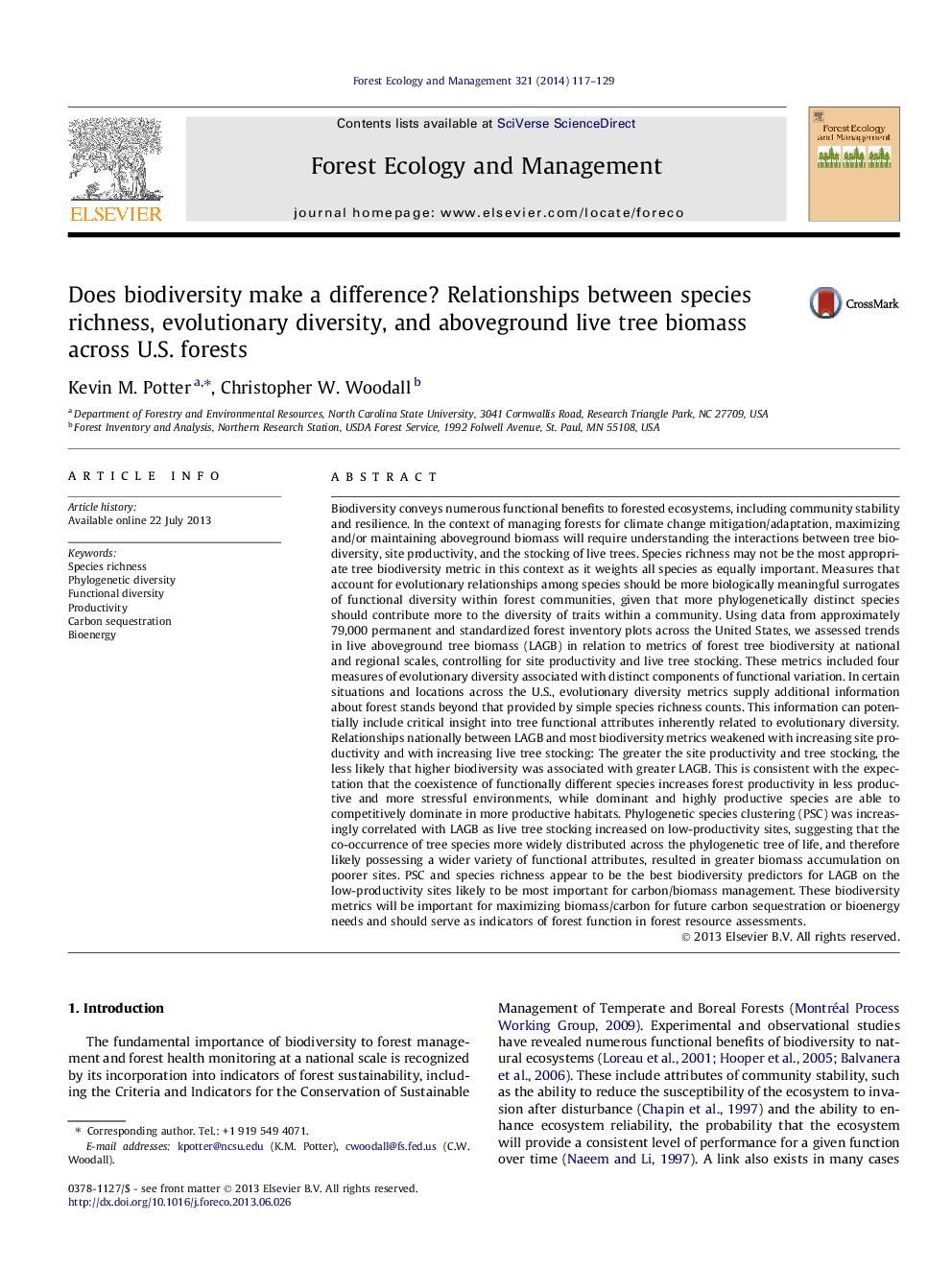| کد مقاله | کد نشریه | سال انتشار | مقاله انگلیسی | نسخه تمام متن |
|---|---|---|---|---|
| 86479 | 159191 | 2014 | 13 صفحه PDF | دانلود رایگان |
• Biodiversity/live tree biomass relationships varied by site quality and tree stocking.
• Biomass trends were less explained by biodiversity on higher quality/stocked sites.
• Coexistence of diverse species may increase biomass in low-quality sites.
• Evolutionary diversity metrics inform stand dynamics when managing biomass.
• Such metrics may be most critical for managing low-quality, poorly stocked sites.
Biodiversity conveys numerous functional benefits to forested ecosystems, including community stability and resilience. In the context of managing forests for climate change mitigation/adaptation, maximizing and/or maintaining aboveground biomass will require understanding the interactions between tree biodiversity, site productivity, and the stocking of live trees. Species richness may not be the most appropriate tree biodiversity metric in this context as it weights all species as equally important. Measures that account for evolutionary relationships among species should be more biologically meaningful surrogates of functional diversity within forest communities, given that more phylogenetically distinct species should contribute more to the diversity of traits within a community. Using data from approximately 79,000 permanent and standardized forest inventory plots across the United States, we assessed trends in live aboveground tree biomass (LAGB) in relation to metrics of forest tree biodiversity at national and regional scales, controlling for site productivity and live tree stocking. These metrics included four measures of evolutionary diversity associated with distinct components of functional variation. In certain situations and locations across the U.S., evolutionary diversity metrics supply additional information about forest stands beyond that provided by simple species richness counts. This information can potentially include critical insight into tree functional attributes inherently related to evolutionary diversity. Relationships nationally between LAGB and most biodiversity metrics weakened with increasing site productivity and with increasing live tree stocking: The greater the site productivity and tree stocking, the less likely that higher biodiversity was associated with greater LAGB. This is consistent with the expectation that the coexistence of functionally different species increases forest productivity in less productive and more stressful environments, while dominant and highly productive species are able to competitively dominate in more productive habitats. Phylogenetic species clustering (PSC) was increasingly correlated with LAGB as live tree stocking increased on low-productivity sites, suggesting that the co-occurrence of tree species more widely distributed across the phylogenetic tree of life, and therefore likely possessing a wider variety of functional attributes, resulted in greater biomass accumulation on poorer sites. PSC and species richness appear to be the best biodiversity predictors for LAGB on the low-productivity sites likely to be most important for carbon/biomass management. These biodiversity metrics will be important for maximizing biomass/carbon for future carbon sequestration or bioenergy needs and should serve as indicators of forest function in forest resource assessments.
Journal: Forest Ecology and Management - Volume 321, 1 June 2014, Pages 117–129
